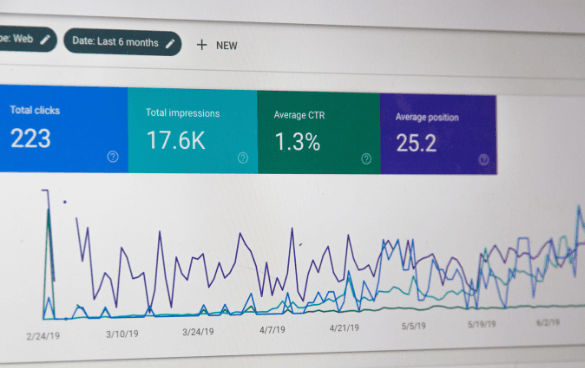Efficient Methods for Remarketing in Google Analytics
In the world of digital advertising and marketing, the world of remarketing in Google Analytics stands as a pivotal device for businesses intending to enhance their on the internet visibility and conversion rates. Through strategic audience division, customized remarketing lists, and engaging ad creatives, businesses can craft customized projects that reverberate with their target audience. Nonetheless, real success depends on the ability to constantly fine-tune and enhance these methods based on efficiency metrics and data understandings. By checking out the subtleties of dynamic remarketing and leveraging advanced monitoring tools, organizations can open the full capacity of their remarketing initiatives, leading to raised brand exposure and customer interaction.
Target Market Segmentation
Using target market segmentation is an essential approach in optimizing the performance of remarketing campaigns within Google Analytics. By splitting your target market right into distinct groups based on their habits, demographics, or passions, you can customize your marketing messages to be a lot more relevant and engaging. This technique enables you to deliver personalized ads to certain sectors, enhancing the probability of conversion.

Moreover, audience division assists you understand the varying needs and preferences of different client groups, allowing you to craft more engaging advertisement creatives and deals. This targeted approach not only enhances the efficiency of your remarketing efforts however additionally enhances overall project performance.
Establishing Up Remarketing Lists
To efficiently apply remarketing approaches in Google Analytics, the preliminary step includes producing targeted remarketing checklists based upon certain audience interactions. Establishing remarketing listings enables marketing experts to section their website site visitors into different groups based on their actions, such as pages watched, products looked for, or activities tackled the website. By defining these sections, online marketers can then create relevant and tailored ads that target these particular groups, boosting the chance of conversion.
Remarketing listings can be established using various standards such as web page visits, period of go to, certain objective completions, or even certain events set off on the internet site. This level of modification makes it possible for online marketers to customize their promotions to match the passions and choices of each fractional audience, causing greater interaction and conversion rates.
In addition, remarketing lists can likewise be created based on data imported from various other resources like CRM systems, permitting a lot more specific targeting. By establishing these targeted remarketing listings, marketing experts can effectively connect to prospective clients who have actually already shown interest in their product and services, making best use of the influence of their remarketing projects.
Creating Compelling Ad Creatives
After segmenting site site visitors right into targeted remarketing checklists based upon specific target market communications, the following critical action is to craft engaging ad creatives that resonate with each fractional team's passions and choices. The performance of remarketing projects heavily relies upon the capability of these ad creatives to capture the focus of the audience and drive them to take the wanted activity.
To develop compelling advertisement creatives, it is necessary to recognize the distinct qualities of each fractional team (What Is “Remarketing” In Google Analytics?). Tailoring the messaging, visuals, and offers to align with the rate of interests and choices of the target market can significantly raise the chances of conversion. Utilizing dynamic advertisements that immediately change content based upon the individual's behavior can likewise enhance the customization of the advertisement experience

Tracking Performance and Optimization
Efficient monitoring of project efficiency and consistent optimization are important aspects of successful remarketing approaches in Google Analytics. To ensure the efficiency of remarketing campaigns, marketing professionals must frequently track crucial efficiency metrics such as click-through prices, conversion rates, and return on advertisement spend. By monitoring these metrics, marketers can obtain valuable insights right into the efficiency of their campaigns and determine areas for enhancement.
In Google Analytics, marketers can leverage devices like conversion tracking and audience segmentation to evaluate the efficiency of their remarketing campaigns. Conversion monitoring permits marketers to track particular activities that users take after clicking a remarketing advertisement, providing useful information on the performance of the campaign in driving desired end results. Target market segmentation, on the other hand, allows marketing experts to separate their audience right into different sections based on different criteria such as demographics, behavior, and rate of interests, enabling for more targeted and personalized remarketing efforts.
Continuous optimization is necessary for maximizing the impact of remarketing campaigns. Online marketers should utilize A/B testing to trying out different advertisement creatives, messaging, and targeting methods to recognize the most effective techniques. By regularly examining campaign performance data and making data-driven optimizations, marketers can make certain that their remarketing campaigns are attaining the wanted results and driving conversions effectively.
Leveraging Dynamic Remarketing
Making use of dynamic remarketing can dramatically enhance the relevance and influence of targeted advertisements in Google Analytics. This sophisticated method permits marketers to show individualized ads to users that have formerly visited their website or used their mobile app. By dynamically displaying items or services that the users have revealed rate of interest in, dynamic remarketing helps to maintain the brand fresh in their minds and encourages them to return to finish a purchase.

Additionally, vibrant remarketing campaigns can be automated and optimized in real-time based on performance data, making certain that the ads remain reliable and relevant. By leveraging dynamic remarketing in Google Analytics, advertisers can produce a lot more impactful and targeted ad campaign that resonate with their audience and drive outcomes.
Final Thought
In final thought, efficient remarketing approaches in Google Analytics entail target market division, targeted remarketing lists, compelling advertisement creatives, performance monitoring, and vibrant remarketing. By concentrating on customized advertisements, information analysis, and continual optimization, businesses can increase conversion rates and drive interaction effectively. Leveraging devices like conversion monitoring makes sure that ads stay individualized and useful content pertinent, causing general success in remarketing efforts.
Through critical target market division, customized remarketing listings, and appealing advertisement creatives, organizations can craft customized campaigns that reverberate with their target audience. Utilizing dynamic advertisements that instantly adjust material based on the customer's actions can also improve the personalization of the advertisement experience.
Conversion monitoring enables marketing experts to track details actions that customers take after clicking on a remarketing advertisement, offering valuable information on the efficiency of the campaign in driving wanted results.Using dynamic remarketing can dramatically improve the importance and influence of targeted advertisements in Google Analytics visit this website - What Is “Remarketing” In Google Analytics?.In verdict, reliable remarketing strategies in Google Analytics entail audience segmentation, targeted remarketing listings, compelling advertisement creatives, efficiency tracking, and dynamic remarketing